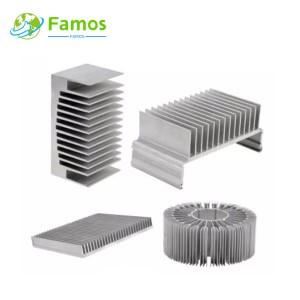If you were to peek inside your computer—nearly any computer—you’ll find nestled atop the processor a hunk of finned metal. It’s the heat sink, and it’s made from a material that conducts heat well—usually aluminum, sometimes copper. A heat sink helps cool the processor by absorbing the semiconductor’s heat and dissipating into the air. They’re nearly always finned, which increases the surface area, making the heat sink more effective.
Receive emails about upcoming NOVA programs and related content, as well as featured reporting about current events through a science lens. Extruded Aluminum Heat Sink

Physicist Lee Huang has turned this idea on its head and applied it to cookware. Rather than dissipating heat, the finned base of Huang’s “Turbo Pot” draws more heat from a gas flame than a traditional flat-bottomed pot.
Here’s Tekla Perry, writing for IEEE Spectrum:
Huang’s business has grown slowly, but he is optimistic. Besides Carraba’s, he’s sold pots to Panda Express and Cheesecake Factory. He says Carraba’s and Panda Express are using his pots to save money, turning down the burners but not changing their cooking time. Carraba’s reported that the company was able to turn the burner’s down to 15,000 BTU/hour (4.4 kilowatts) from 30,000 or 33,000 BTU (8.8-9.7 kw), saving enough money to payback the cost of the new pots in five to six months. Cheesecake Factory, however, sees the Turbo Pots as a way to speed up productivity and cook faster.
Huang has been talking to energy companies about efficiency rebates for the pots. Even without a rebate, consumers may have another incentive to buy his wares— according to the Turbo Pot website , finned pots boil 1.5 liters of water in half the time.
Photo by adikos/Flickr (CC-BY)

Custom Ram Heatsink Major funding for NOVA is provided by the NOVA Science Trust, the Corporation for Public Broadcasting, and PBS viewers.